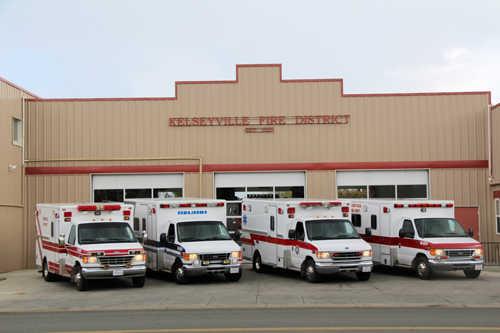- James BlueWolf
- Posted On
BlueWolf: Regarding messianic cousins
Few Americans today study the motivations and expectations of those very peoples our young warriors and peacemakers are currently shedding their blood and lives for in the Middle East.
The ancient dividing lines between Shiite and Sunni tribesman, both devout followers of Muhammad and believers in Islam, seem locked in a vortex of conflict that ignores any passage of time.
Though the majority of the individual followers of Islam have moved beyond medieval thought, there are those who tenaciously hold onto ancient views of the world and their religion.
This hesitancy to let go of long-held traditional views – dogmatically attempting to preserve what they perceive as authentic Islamic thought – resembles our Conservative Christian community adamantly opposing any reinterpretation of scripture or change in time-honored mores and values.
One must remember that medieval methods, punishments and values of the followers of Islam (and the church) were products of a time in which horrific acts of supreme violence toward people and nations were considered reasonable and were, in fact, commonplace in practice among both religions.
The beliefs, motivations and practices of ISIS are throwbacks to those medieval times. They are that way, not by any haphazard design, but because they are specifically linked to certain prophetic beliefs they hold irrefutable and immutable in time. I believe it is important for Americans to understand those prophecies.
The Islamic State, known as the Islamic State of Iraq and al-Sham (ISIS), follows a distinctive variety of Islam whose beliefs about the preordained path to the Day of Judgment are all that matter to its strategy.
The prophesied Islamic Caliphate requires immense territory to remain legitimate, as well as a functional bureaucracy divided into civil and military appendages to rule it.
The fighters of the Islamic State are fanatic throwbacks to a medieval form of Islam and are attempting to graphically and authentically copy the most horrific and terrorizing norms of war.
This behavior includes a number of practices that modern Muslims (and Christians) prefer not to acknowledge as integral to their early original sacred texts.
Slavery, crucifixion and beheadings are traditional methods of that time, and are not simply being adopted to freak-out the weak-stomached West and its people. Islamic State fighters support traditional medieval tradition and are dragging it, kicking and screaming, back into the mainstream.
Though the Islamic State must also support the followers of the Caliphate (including providing services like collecting garbage and keeping the water running), nevertheless the “end of days” is the primary leitmotif of its propaganda.
For true believers – the kind who long for epic good-versus-evil battles – visions of apocalyptic bloodbaths fulfill a deep psychological need.
This is the driving force behind the ISIS Caliphate – to fulfill prophecy.
This includes the belief that the armies of Rome (interpreted today as those of the West – and primarily the United States), will mass to meet the armies of Islam in northern Syria, at or near the Syrian city of Dabiq, near Aleppo.
It is here, the Prophet reportedly said, that the armies of “Rome” will set up their camp. The Caliphate will meet them and emerge victorious – for a time. After its battle in Dabiq, the Caliphate will expand as far as Istanbul.
However, at that time, an anti-messiah or Antichrist, known in Muslim apocalyptic literature as Dajjal, will come from the Khorasan region of eastern Iran and overwhelm the Caliphate’s fighters, until just 5,000 remain, cornered in Jerusalem.
Then, just as the anti-messiah Dajjal prepares to finish them off, Jesus (yes, THAT Jesus) – the second-most-revered prophet in Islam – will return to Earth, spear Dajjal, and lead the Muslims to victory!
I bet that 99 percent of the people reading this article never would have guessed that it is Jesus himself that ISIS expects will save them from annihilation at the hands of the Anti-Christ!
The Islamic Caliphate – adhering to a medieval form of morality – is preparing to face its own near-obliteration, while remaining confident that it will receive divine succor from the Messiah, Jesus, if, and only if, it stays true to the prophetic model it believes.
Surprisingly, conservative fundamentalist Christians are also closely following events in the Middle East and point to many similar prophetic events in the book of Revelation and the book of Daniel, chapter 11, to support their own ideas of their view of an “end of days.”
They too look to Jerusalem as the location of final resolution, and to the return of the messianic Jesus to bring about the culmination of the human story. How ironic is that?
What we and our leaders must understand is that this is not a typical movement for power and politics but a sincere fanatical belief that the salvation of their very souls depends on them establishing the Caliphate and fighting the precursor battles with the West, in order to be almost destroyed themselves so as to bring about Jesus return and their final victory.
All the tactics and strategy we employ should be toward NOT fulfilling their prophecy. The problem is that they surround themselves with innocents.
Every step we, or any other force, take toward a final confrontation in Syria – short of a total annihilation of their followers – will simply make them stronger.
James BlueWolf lives in Nice, Calif.





 How to resolve AdBlock issue?
How to resolve AdBlock issue? 





